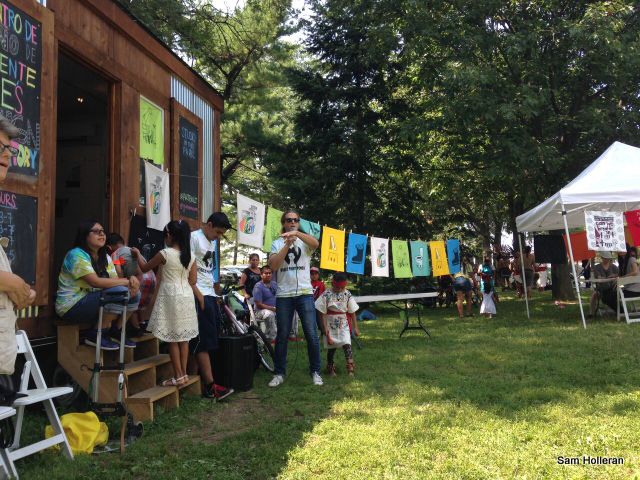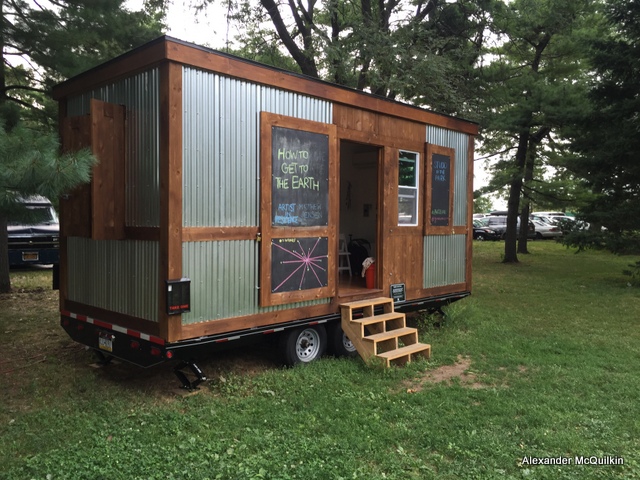
When artist Matthew Jensen got his start, he had to work full-time as a studio manager to afford the rent at his tiny Tribeca studio. Like a lot of young artists living and working in New York City, Jensen is forced to contend with a real estate market more attuned to the needs of bankers and techies. But for the past month, Jensen has been working out of a 160-square-foot trailer outside of the Queens Museum in Flushing Meadows Corona Park. That trailer is the work of ArtBuilt Mobile Studios, a collaborative partnership between ArtBuilding and ArtHome, two non-profit organizations dedicated to supporting artists and creative workers locate and finance space to live and work.
Esther Robinson, one of ArtBuilt’s cofounders, spent years traveling the country teaching financial literacy, microenterprise, and homeownership support to artists, but she found a different beast in New York City. Here was a city where artist studios and galleries were facing unmanageable rent hikes in trendy neighborhoods like Soho and the East Village, or being evicted wholesale by new owners, as was the case recently in Industry City.
Fortuitously, this was also around the same time the tiny house movement began to gain steam in the mid-2000s. The idea of building one’s own home, and being able to move it, struck Robinson as potentially very attractive to an artist living in what she calls a “real estate-contested” city like New York. These small mobile studios would sidestep the expensive insurance and permitting required of artists working in commercial spaces, and their owners could actually keep any substantial investments made in them, rather than move from space to space. The result is a 19 x 8-foot street-legal artist studio trailer. And to prove its viability, the ArtBuilt team assembled the studio entirely from materials available at your local home improvement store, for under $13,000.
For ArtBuilt’s New York City debut, in partnership with the Queens Museum, two artists were selected for a month-long residency. From June 15 to July 15, Patrick Rowe transformed the trailer into a “People’s Design Laboratory.” During open studio hours and special events, park-goers were invited to draw and discuss their favorite attractions in the park. A massive and confusing landscape crisscrossed with highways and visited by speakers of 138 languages, Flushing Meadows was due for a wayfinding redesign, thought Rowe (echoed by a community design partnership for the park earlier this year by the Design Trust for Public Space). The collaborative and participatory nature of the invitation to help create new navigational tools made a pointed contrast to highly structured and sometimes rather exclusive design charrettes and community board meetings.
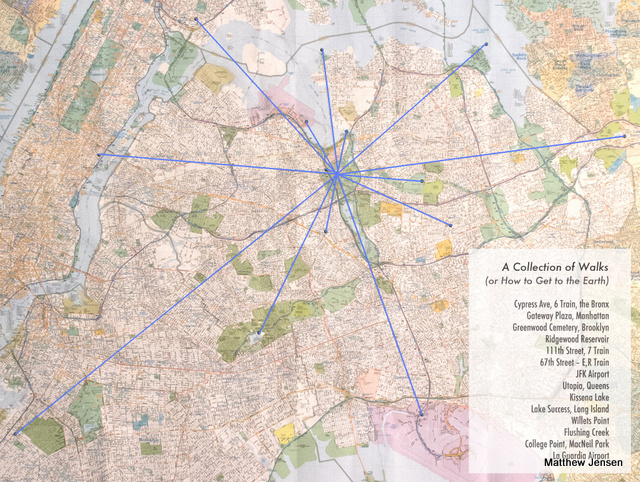
For the second residency, ending this weekend, Matthew Jensen organized a series of 14 walks, all culminating at the park’s giant Unisphere globe structure. The length and direction of the walks are based on a solar diagram etched on the Voyager Golden Record that was cast into space in 1977. Over the course of his four weeks, Jensen walked over 85 miles, from points as far as Sunset Park, Midtown Manhattan, the South Bronx and JFK Airport, collecting found objects, taking photographs and gathering observations.
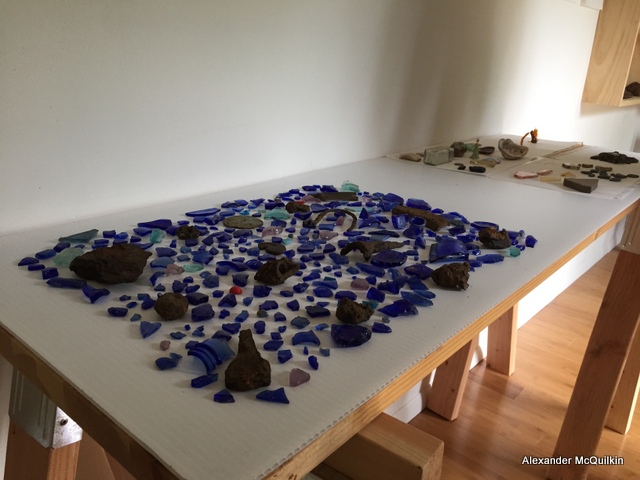
These discoveries have been progressively catalogued and displayed in the mobile studio, which, when open to the public, acts as a sort of cabinet of curiosities. Flushing Meadows, prior to its redevelopment for the 1939 World’s Fair, was the site of the Corona Ash Dumps, a dumping ground made famous as the Valley of the Ashes in The Great Gatsby. And as Jensen notes, the park’s shallow topsoil makes it easy for long-lost detritus to be found throughout the park, perhaps only easily discovered by the trained eye. Jensen’s favorite find thus far? A Spanish real dated 1746, scooped up near the Long Island Sound in College Point. Following his residency, Jensen will create a walker’s guide based on his meanderings, intended to help the public rediscover their neighborhoods and uncover hidden gems.
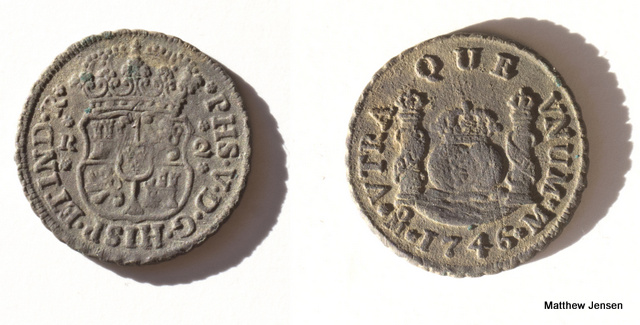
Robinson and her partner in ArtBuilt, Guy Buckles, stress that their mobile studios won’t be for everyone. They liken them to the food truck movement – not every restaurant should be a food truck, but for some, a truck is a cheap and mobile alternative to brick and mortar. Robinson and Buckles are curious to find out what sorts of artistic practice or microenterprise work best in the mobile studio, and in what sorts of environment it might thrive. When the Flushing Meadows run comes to an end, they hope to see their mobile studios pop up in more underdeveloped land around the city, places where there is little competition from private developers, or places where land has been left idle, in construction sites, or under bridges and elevated rail lines.
For both artists that participated in the residency, the mobile studio was bigger than their actual day-to-day studios. That speaks not just to the preciousness of real estate in New York City, but to the fact that, like tiny homes, we perceive these spaces as much bigger and more useful once we experience them for ourselves. The warm reaction the mobile studio garnered in just two months in one of the city’s busiest parks proves ArtBuilt could be onto something. “It’s an artistic experiment,” Robinson says, “let’s see what can happen.”
The mobile studio is located just north of the Queens Museum in Flushing Meadows-Corona Park. Matthew Jensen is hosting his final open studio tonight, Thursday, August 13th between 6:30 and 8:30 pm. On Saturday, August 15th, the studio is hosting a cook-out from 3 to 7 pm to mark its final weekend in the park.






